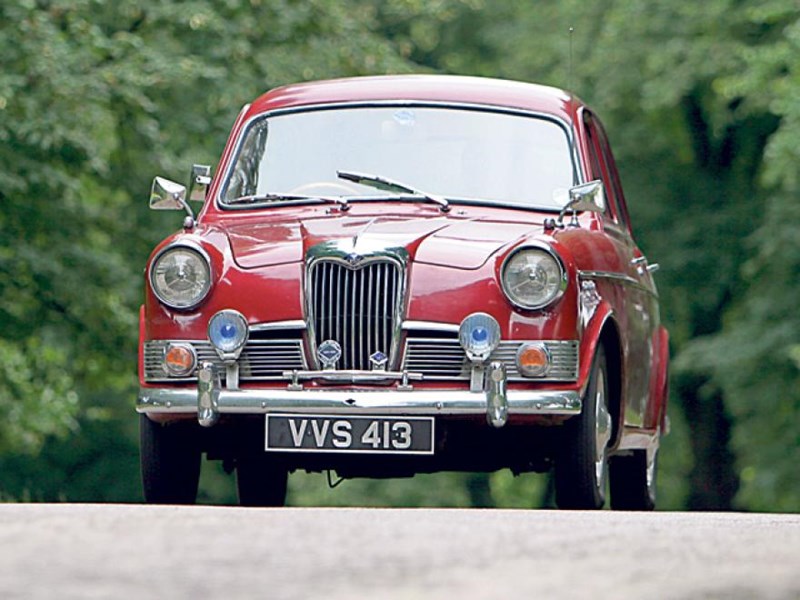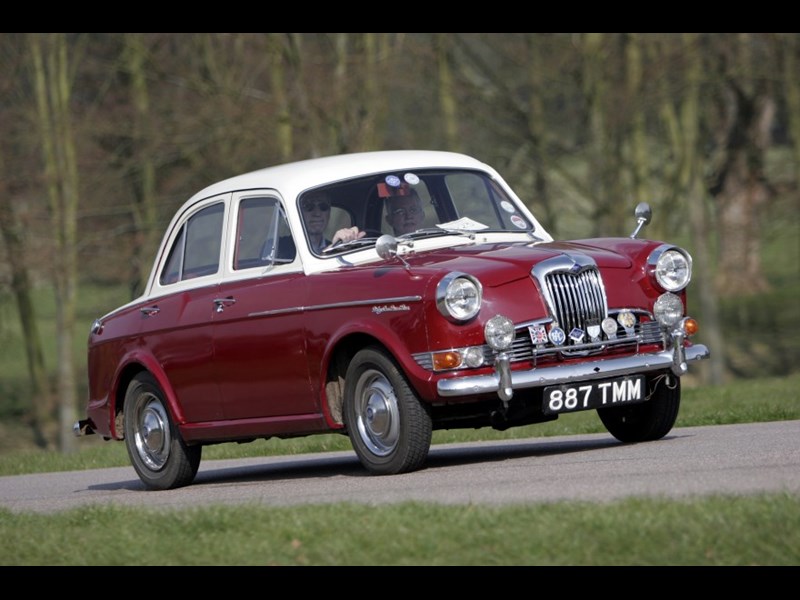Introduced in November 1957 at the London Motor Show, the Riley One-Point-Five was the result of a project conceived to replace the evergreen Morris Minor with a larger project. This project; codenamed DO1059, was intended to be capable of housing the larger B-series in 1200cc form. However, the Suez crisis ensured that axing the Minor would be commercial suicide; so with sales booming the replacement project was axed. The development work wasn’t wasted however, for the Riley One Point Five and less powerful Wolseley 1500 emerged as upmarket alternatives to the Minor and the 100E.
VITAL STATISTICS
Engine 1489cc, 4-cyl, OHV
Power 66bhp @ 5200rpm
Torque 77lb/ft@3500rpm
Top Speed 82mph
0-60mph 18.9seconds
Economy 27mpg
Gearbox 4 speed manual
WHAT TO LOOK FOR
BODYWORK
Rust is your main enemy and it can pretty much strike anywhere. Try to get underneath so you can check the vulnerable floorpan, but best advice is to look absolutely everywhere. Front wings are a known grot spot – along their tops, down their trailing edges and around the headlamps. The front panel and valance also corrode, as do the sills. If the sills get too bad, then the tinworm can spread to the floorpan as well. Moving back a bit more, the bottoms of the doors go frilly if the drain holes have become blocked, as do the rear wheelarches. And what the arches are attached to doesn’t fare much better, as the rear wings tend to disappear from the bottom upwards thanks to mud traps and thrown-up stuff from the road. Underneath, the front chassis legs, torsion bar and rear spring mountings go crusty. As issues with these are all MoT failure points, if a car has a valid certificate, they should be reasonably okay.
Much of the brightwork is Mazak, which tends to pit and corrode. Putting it right could mean spending lots of time searching around at autojumbles.
ENGINE
Thanks to B-series engines being shared with the MGA, parts are quite plentiful. The engines are robust, although they do tend to burn oil. If it is excessive – watch for clouds of blue smoke from the rear – then a rebuild will be necessary sooner rather than later. Check the oil pressure while on the move: it should be at least 50psi when warm and cruising nicely. Engines are usually a little noisy, thanks to worn timing chains, but it shouldn’t be excessive.
RUNNING GEAR
Synchromesh on the gearboxes is weak, especially with all the torque from the Riley, which causes second gear synchro to expire easily. On your test drive, change up and down the ‘box a lot to see how easy the shifts are. While whining from the transmission isn’t that much to be worried about, it will eventually lead to the gearbox needing to be replaced. However, the units could last for years making such slight protestations. On the MkIII cars – from 1961 onwards – the gearboxes were stronger, so these tend to last longer than the earlier ones. Back axles are resilient enough to outlast the rest of the car, unless they have been allowed to run dry.
The suspension borrows a lot from the Morris Minor, including the propensity for the front to collapse if the swivels aren’t lubricated every 1000 miles. Try to ascertain how conscientiously this has been done. Lack of attention will cause the joints to seize and, ultimately, to shear, leading to the front end giving way. Lever arm dampers go sloppy after 30,000 to 40,000 miles, and can also spring leaks.
Brakes are reasonable enough, although they are drums all around and without any servo-assistance.
INTERIOR
A leather and wood interior means it is vital to buy the best you can find, otherwise a retrim by a specialist may exceed the cost of the car. Controls and instruments are shared with a lot of other BMC cars, thus making them quite easy to source.
Electrics are simple enough, although the boot-mounted SU electric fuel pump does often play up due to poor contacts. Wiring looms go brittle with age too, which means that things stop working. Attempts to make a ‘quick fix’ quite often fail to correctly diagnose a more serious problem.
VERDICT
Rileys project a veneer of sporting luxury while being cheap to buy and run. They’re quite practical machines, with spacious boots and the ability to keep up with modern cars and cruise comfortably on motorways. And they’re sufficiently rare that a good one – or even a not-so-good one – will always turn heads. It’s still possible to use and appreciate one every day without ruining your appetite for 1950s and 60s small classics.

